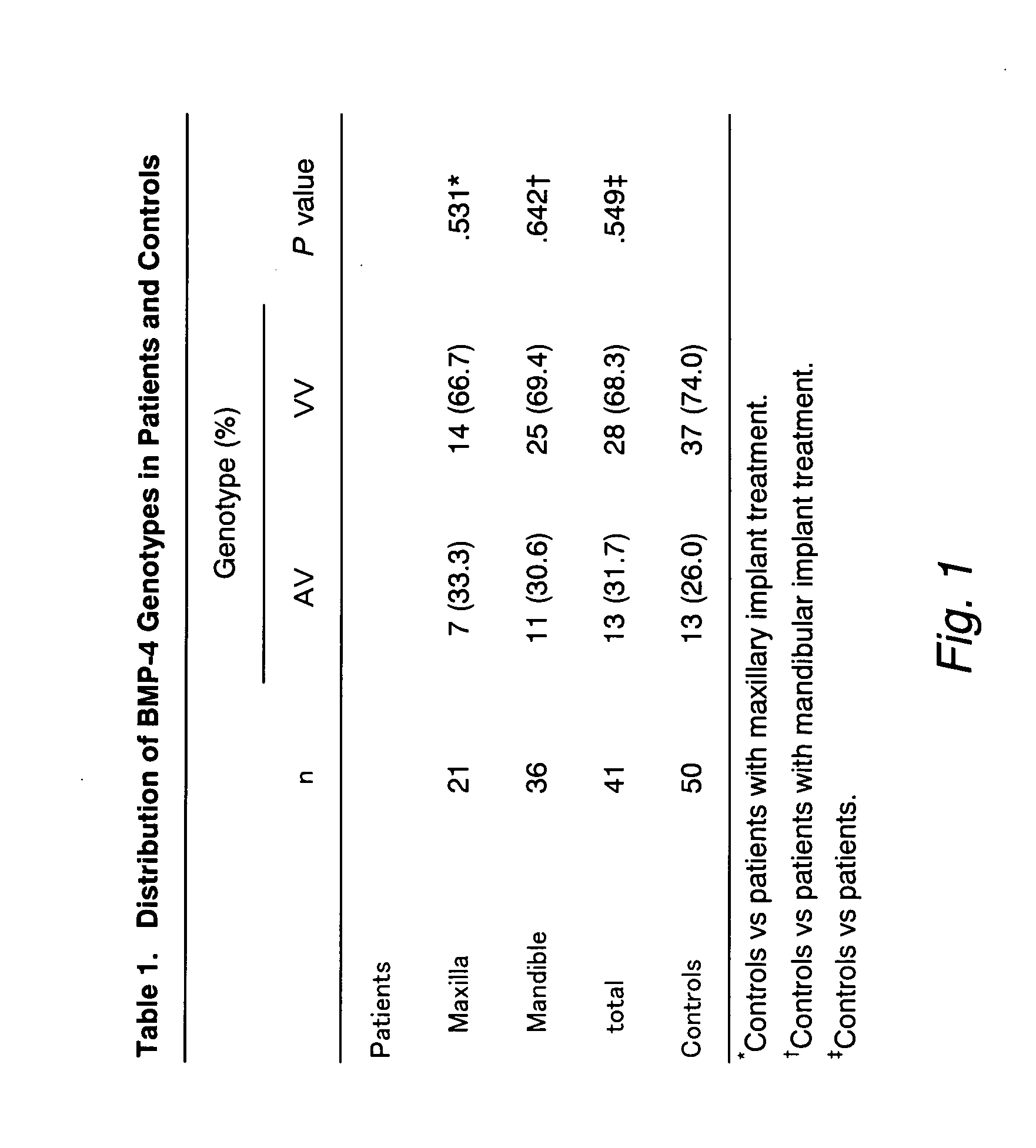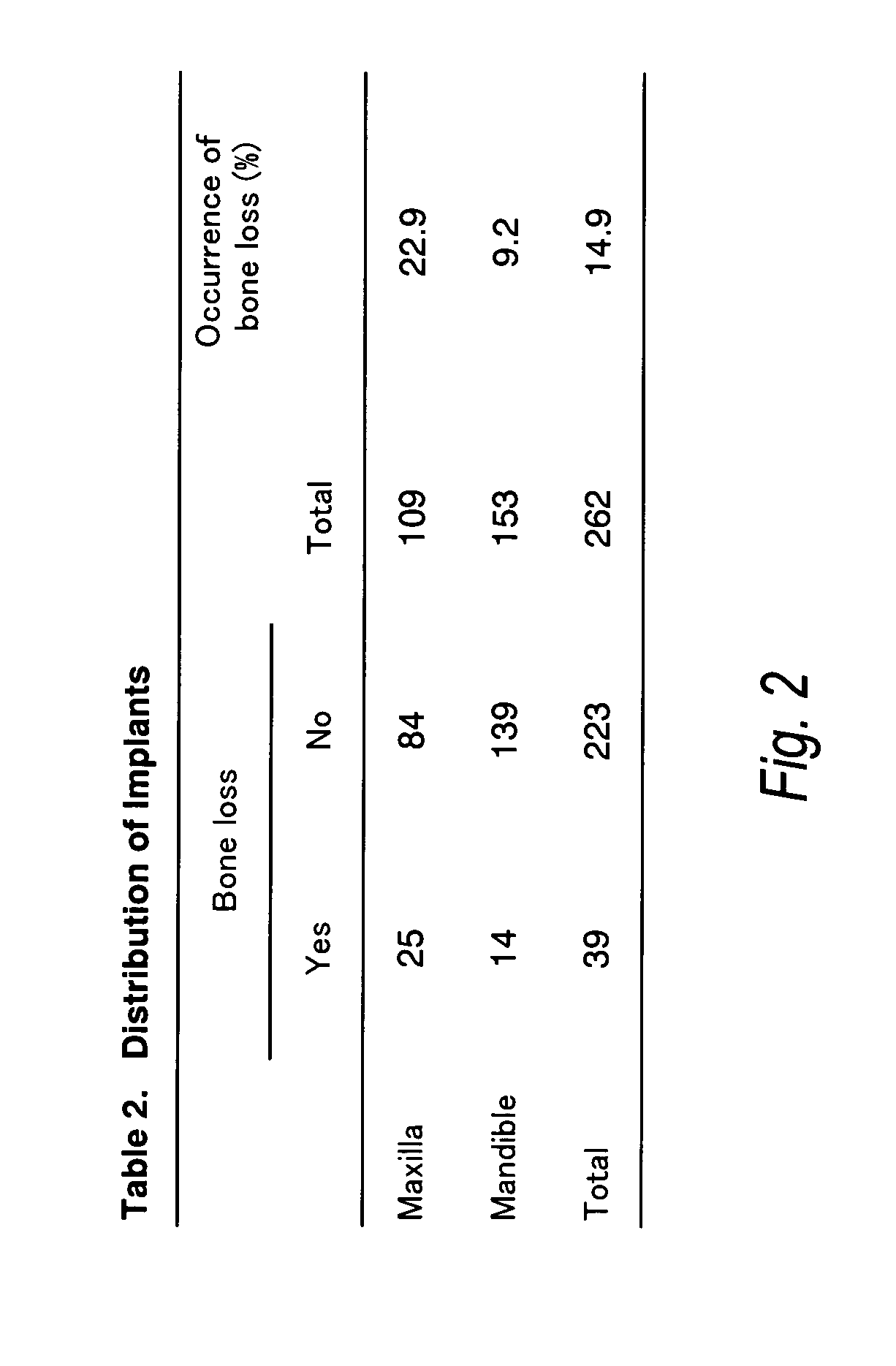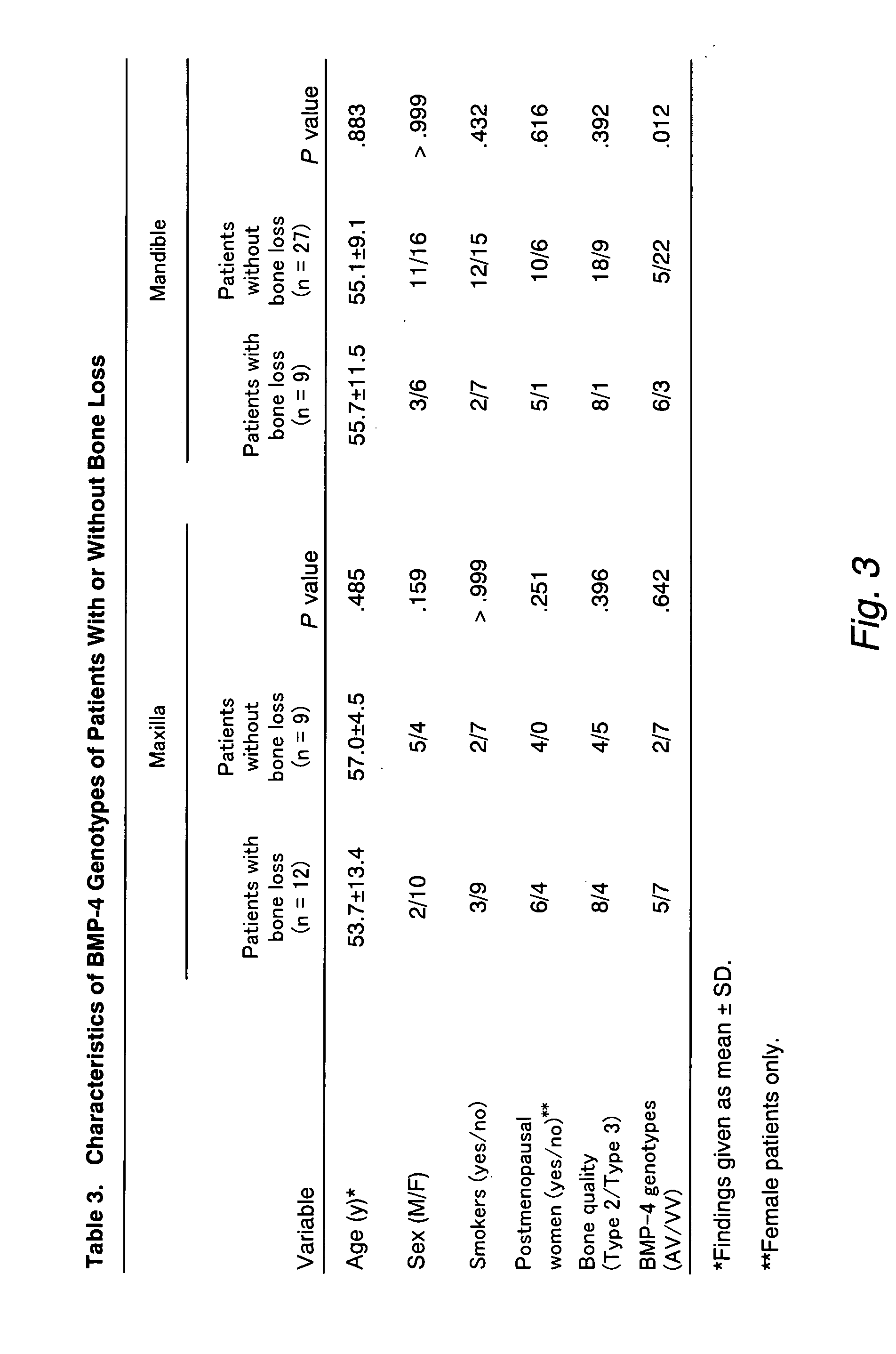Methods for diagnosing a genetic risk for bone loss
a genetic risk and bone loss technology, applied in the field of genetic risk for bone loss diagnosis, can solve the problems of easy to develop bone loss, and prone to bone loss, and achieve high genetic risk for bone loss, high bone loss risk, and high pre-implantation treatment.
- Summary
- Abstract
- Description
- Claims
- Application Information
AI Technical Summary
Benefits of technology
Problems solved by technology
Method used
Image
Examples
example 1
1. Materials and Methods
1-1. Selection of Subjects
[0125] Subjects were 41 healthy Japanese people without consanguinity who underwent implant treatment of the maxilla or mandible between 1999 and 2001 (16 males and 25 females); ages ranged between 29 and 74 years old (mean: 54.8±9.4 years old). Medical history, smoking history, and presence or absence of menstruation were recorded, and ossein was evaluated in compliance with the classification of Leckholm and Zarb (U. Lekholm and G. A. Zarb. 1985. Patient selection and preparation. In: Branemark P-I, Zarb G A, Albrektsson T (eds). Tissue-Integrated Prostheses: Osseointegration in Clinical Dentistry. Chicago: Quintessence: 199-209). Furthermore, the distribution of BMP-4 genotype polymorphism was examined by considering 50 healthy Japanese people without consanguinity who were not affected with oral disorder (23 males and 27 females; ages: 30-70 years old, mean: 50.9±11.9 years old) as the control group. Patients, into whom one o...
example 2
1. Materials and Methods
1-1. Selection of Subjects
[0135] Thirty-six Japanese patients, who underwent implant treatment for mandibular teeth defect by the same surgeon at the same dental clinic between 1999 and 2001 [14 males and 22 females; ages ranged between 29 and 74 years old (mean: 55.3 years old; the treatment group was identical to the group in Example 1], was considered to constitute the implant treatment group. Of patients in the implant treatment group, furthermore, those who developed early bone loss around the implant were considered to constitute the bone loss group, and those who showed no bone loss the bone nonloss group. At the time of treatment, systemic or dental history, smoking history, and presence or absence of menstruation were recorded. Furthermore, ossein was evaluated in accordance with the classification of Leckholm and Zarb (U. Lekholm and G. A. Zarb. 1985. Patient selection and preparation. In: Branemark P-I, Zarb G A, Albrektsson T (eds). Tissue-Int...
PUM
 Login to View More
Login to View More Abstract
Description
Claims
Application Information
 Login to View More
Login to View More - R&D
- Intellectual Property
- Life Sciences
- Materials
- Tech Scout
- Unparalleled Data Quality
- Higher Quality Content
- 60% Fewer Hallucinations
Browse by: Latest US Patents, China's latest patents, Technical Efficacy Thesaurus, Application Domain, Technology Topic, Popular Technical Reports.
© 2025 PatSnap. All rights reserved.Legal|Privacy policy|Modern Slavery Act Transparency Statement|Sitemap|About US| Contact US: help@patsnap.com



